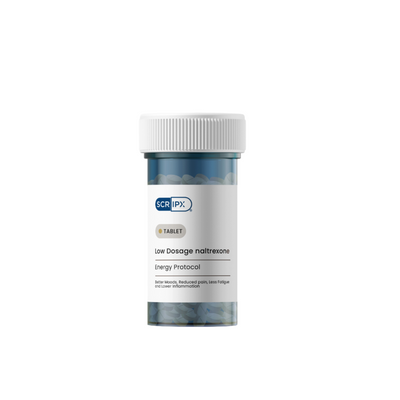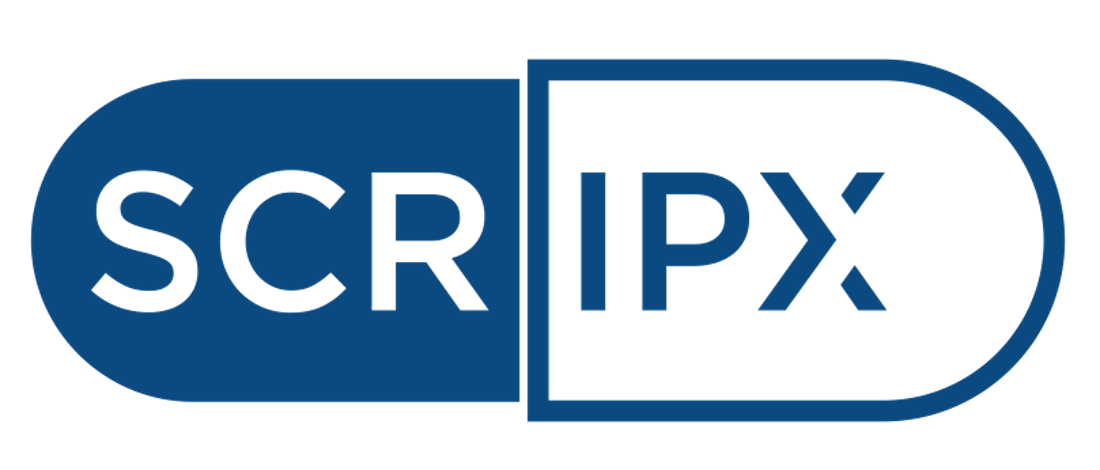
What is Low Dose Naltrexone? Benefits, Uses, and Everything You Need to Know
In recent years, low dose naltrexone (LDN) has gained significant attention in the wellness and medical communities for its potential to treat a wide range of conditions, from chronic pain to autoimmune diseases. But what exactly is low dose naltrexone, and why is it becoming a go-to alternative treatment for many? In this comprehensive guide, we’ll dive into everything you need to know about LDN, its uses, benefits, side effects, and how it works. Are most trusted partner, Scripx Pharmacy, can also provide additional details about how to procure this medication (cost, availability, and delivery options).
What is Low Dose Naltrexone (LDN)?
Low dose naltrexone is a version of the medication naltrexone, typically prescribed at much lower doses than those used to treat opioid addiction or alcohol dependence. While the full dose of naltrexone for treating substance abuse is usually around 50 mg, LDN is typically administered at doses ranging from 1 mg to 5 mg.
Naltrexone itself works by blocking opioid receptors in the brain, preventing the effects of opioids and alcohol. However, when taken at low doses, it functions differently. In smaller amounts, low dose naltrexone is thought to have a modulating effect on the immune system and may reduce inflammation, promote healing, and improve overall health.
How Does Low Dose Naltrexone Work?
Low dose naltrexone works in a fascinating and unique way. When you take it in small doses, it temporarily blocks opioid receptors in the brain. This action triggers the body to respond by producing more endorphins—the body's natural "feel-good" hormones—leading to several benefits, including reduced pain, enhanced mood, and improved immune function. Please be sure to follow Scripx Facebook page to follow real time trends and updates on the various options of LDN.
Here’s how it works in a nutshell:
- Temporary Blockage of Opioid Receptors: Low dose naltrexone blocks the opioid receptors in your brain for a short period (around 4-6 hours).
- Increased Endorphin Production: Your body compensates by producing more endorphins, which helps to balance immune system function and reduce inflammation.
- Improved Immune Function: By modulating the immune response, LDN can help alleviate symptoms of conditions like autoimmune disorders, fibromyalgia, multiple sclerosis, and Crohn's disease.
What is Low Dose Naltrexone Used For?
Low dose naltrexone has been studied and used off-label for a wide variety of health conditions. Some of the most notable uses include:
1. Chronic Pain and Inflammation
One of the most common reasons people use LDN is for chronic pain management. It’s particularly effective for conditions like fibromyalgia, complex regional pain syndrome (CRPS), and neuropathic pain. LDN helps by reducing inflammation and increasing endorphin levels, both of which can reduce pain intensity.
2. Autoimmune Diseases
Low dose naltrexone has shown promise in treating autoimmune diseases like multiple sclerosis (MS), Crohn’s disease, Hashimoto’s thyroiditis, rheumatoid arthritis, and lupus. Its immune-modulating effects can help regulate overactive immune systems that are attacking the body’s tissues.
3. Cancer Treatment (Adjunct Therapy)
Some studies suggest that low dose naltrexone may help improve the effectiveness of traditional cancer treatments like chemotherapy by boosting the immune system. Though more research is needed, LDN is sometimes used as an adjunct to cancer therapy for its potential to enhance the body's defense against cancer cells.
4. Mental Health and Mood Disorders
LDN has been found helpful in managing depression, anxiety, and even post-traumatic stress disorder (PTSD). The increased production of endorphins can help improve mood, reduce anxiety, and promote a sense of well-being.
5. Neurodegenerative Diseases
Conditions like Parkinson’s disease and Alzheimer’s disease are thought to benefit from low dose naltrexone due to its neuroprotective properties. It may help slow the progression of these diseases by reducing inflammation in the brain and boosting the immune system.
6. Other Conditions
Low dose naltrexone has been explored for its potential benefits in treating conditions such as irritable bowel syndrome (IBS), chronic fatigue syndrome (CFS), and HIV/AIDS.
Potential Benefits of Low Dose Naltrexone
The benefits of LDN are vast, and many people report noticeable improvements in their symptoms after starting treatment. Some of the top benefits of low dose naltrexone include:
- Pain Relief: By modulating the immune system and increasing endorphin production, LDN helps to alleviate both acute and chronic pain.
- Reduced Inflammation: LDN has anti-inflammatory properties, making it a valuable treatment for inflammatory conditions like rheumatoid arthritis and Crohn’s disease.
- Improved Immune System Function: LDN enhances immune response and may help regulate overactive immune systems, as seen in autoimmune conditions.
- Mood Enhancement: Increased endorphin levels can help improve mood, reduce feelings of anxiety, and alleviate symptoms of depression.
- Better Sleep: Many people taking LDN report improved sleep quality due to the calming and pain-relieving effects.
Side Effects of Low Dose Naltrexone
While LDN is generally considered safe, it’s not without potential side effects. Some individuals may experience mild, transient side effects, including:
- Sleep disturbances (insomnia or vivid dreams)
- Gastrointestinal issues (nausea, bloating, constipation)
- Headaches
- Fatigue
- Mood changes (irritability or anxiety)
It’s important to note that these side effects are usually temporary and tend to subside after the body adjusts to the medication. However, as with any medication, it’s essential to consult with your healthcare provider before starting LDN, especially if you have any pre-existing health conditions.
Is Low Dose Naltrexone Safe?
When used under the supervision of a healthcare professional, low dose naltrexone is considered safe for most people. However, LDN may not be suitable for individuals who are pregnant, breastfeeding, or have certain health conditions (such as liver or kidney problems). Always speak with your doctor to determine if LDN is appropriate for your situation.
How to Take Low Dose Naltrexone & Prescriptions
Low dose naltrexone is typically taken once a day, usually before bedtime. Starting doses are often very low (1 mg or 2 mg) and are gradually increased by your doctor to find the optimal dose for your needs.
It’s important to follow your doctor’s instructions precisely to minimize side effects and ensure maximum effectiveness.
Scripx Pharmacy is our trusted pharmacy partner and Tele-health partner. For any patient that does not currently have a prescription, but can relate to the common issues noted above, Scripx will also offer virtual care services for your prescription. Simply Click Here to start your online visit.
Is Low Dose Naltrexone Effective?
The effectiveness of low dose naltrexone can vary depending on the individual and the condition being treated. Many people experience significant improvements in their symptoms, while others may need to try different dosages or combination therapies to find the best results. The key takeaway is that LDN has shown promise in treating a wide range of conditions, particularly those involving chronic pain, inflammation, and immune dysfunction.
Conclusion
Low dose naltrexone (LDN) is an innovative and powerful medication that’s changing the way we approach chronic health conditions. Whether you’re dealing with autoimmune diseases, chronic pain, or mental health struggles, LDN may offer a new path to relief. However, as with any treatment, it’s essential to consult with a healthcare provider to determine whether LDN is right for you.
If you’ve been looking for a natural, safe, and effective treatment option, low dose naltrexone could be the game-changer you’ve been waiting for. With its immune-modulating properties, pain-relieving effects, and mood-boosting benefits, it’s no wonder LDN is becoming a popular alternative treatment for so many.
Keywords:
- Low dose naltrexone
- Benefits of low dose naltrexone
- Low dose naltrexone for chronic pain
- Low dose naltrexone autoimmune
- Low dose naltrexone cancer treatment
- Naltrexone and fibromyalgia
- Naltrexone for multiple sclerosis
- Side effects of low dose naltrexone
- Is low dose naltrexone safe
- Low dose naltrexone dosage
By understanding what low dose naltrexone is and how it can be used to treat a variety of health conditions, you can make an informed decision about whether it could work for you. Always remember to work with a knowledgeable healthcare professional to ensure that you’re getting the safest and most effective treatment possible.
